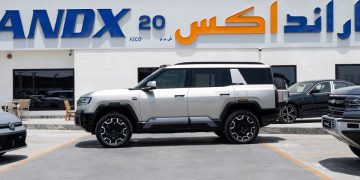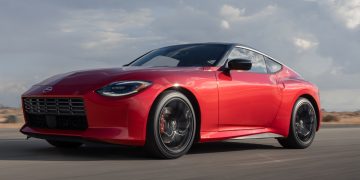The rise of electric vehicles (EVs) marks a critical turning point in the automotive industry, with governments around the world increasingly adopting policies that favor the transition from gasoline-powered vehicles to cleaner, more sustainable transportation options. As global concerns about climate change and air pollution intensify, governments are pushing for rapid reductions in carbon emissions, and one of the most direct ways to achieve this is by encouraging the adoption of electric vehicles. This shift, however, does not come without challenges—both technological and societal—and the question remains: will government policies accelerate the widespread adoption of electric vehicles, and ultimately lead to the end of the internal combustion engine (ICE) vehicle?
1. Government Policies and Their Role in Shaping the Future of Transportation
A. Climate Change and Environmental Pressures
The escalating threat of climate change is one of the primary drivers behind the push for a transition from gasoline-powered vehicles to electric vehicles. Internal combustion engine (ICE) vehicles are one of the largest contributors to global carbon emissions, and the transportation sector accounts for a significant share of these emissions. According to the International Energy Agency (IEA), transportation accounted for nearly 24% of global CO2 emissions in 2020, with passenger cars alone contributing 12%. Governments, particularly in the European Union, North America, and Asia, are increasingly recognizing the need to reduce emissions from the transportation sector to meet their climate goals.
As part of the Paris Agreement, countries worldwide have pledged to limit global warming to well below 2°C, with an ideal target of keeping the rise in temperature below 1.5°C. Transitioning to electric vehicles is seen as one of the most viable pathways to achieving these climate goals, as EVs produce zero tailpipe emissions. This has led to the creation of a host of policies designed to incentivize the adoption of EVs and penalize the continued use of traditional gasoline-powered vehicles.
B. Government Mandates and Regulations: A Push Toward EVs
To accelerate the transition to electric vehicles, many governments are setting ambitious targets and establishing regulations that either directly or indirectly mandate the adoption of EVs. These include:
- Bans on the Sale of New Internal Combustion Engine Vehicles Several countries and regions are setting future deadlines for banning the sale of new gasoline and diesel vehicles. For example, the European Union has proposed a ban on the sale of new ICE vehicles by 2035, aiming for all new cars to be zero-emission. Similarly, countries such as the United Kingdom and Norway have set similar targets, with Norway aiming to end the sale of new fossil-fuel-powered vehicles by 2025. These bold moves push automakers to invest heavily in EV technology and speed up their shift toward electric mobility.
- Emissions Standards and Fuel Efficiency Regulations Governments are tightening emissions standards for traditional vehicles, making it increasingly difficult for automakers to sell vehicles that run on fossil fuels. Stricter regulations on fuel economy and greenhouse gas emissions, such as those imposed by the European Union and the United States, are forcing manufacturers to adopt alternative technologies to meet the required standards. As a result, many manufacturers are moving toward electrification, both in their mass-market and luxury vehicle offerings, to comply with these regulations.
- Government-Backed EV Sales Targets Many governments have implemented EV sales targets, which incentivize both manufacturers and consumers to embrace electric vehicles. In some cases, governments have set quotas for how many EVs must be sold within a specific timeframe, or they have partnered with manufacturers to ensure that EV production meets targets for future years. These sales targets encourage automakers to prioritize EV development and increase the availability of electric cars for consumers.
- Zero-Emission Vehicle Mandates In addition to direct sales quotas, many regions have implemented zero-emission vehicle (ZEV) mandates, which require automakers to sell a certain percentage of their fleet as electric vehicles. These mandates are particularly prevalent in California, which has long been a leader in setting progressive environmental regulations in the U.S. California’s ZEV program requires automakers to increase their share of electric and hydrogen-powered vehicles on the market.
2. The Role of Government Incentives in EV Adoption
While mandates and regulations play a central role in pushing automakers toward electric mobility, government incentives are essential in accelerating consumer adoption of electric vehicles. These incentives make EVs more affordable and appealing to a broader range of consumers. The following are some of the key government incentives that are driving the adoption of EVs:
A. Purchase Subsidies and Tax Credits
One of the most common incentives offered by governments is the direct subsidy or tax credit for purchasing electric vehicles. In the U.S., the federal government offers a tax credit of up to $7,500 for the purchase of qualifying electric vehicles, although this incentive is subject to certain conditions, including limits on the manufacturer’s total sales of electric vehicles. Similarly, European countries like Germany, France, and the Netherlands offer substantial incentives for purchasing EVs, ranging from direct cash rebates to reduced registration fees.
These financial incentives lower the upfront cost of purchasing an EV, making it more attractive for consumers, particularly given that EVs have traditionally had higher price points compared to gasoline-powered cars.
B. Exemption from Registration Fees and Road Taxes
In many regions, EVs are exempt from certain fees and taxes that are imposed on traditional vehicles. For example, some countries and cities offer exemptions from road taxes or registration fees for electric vehicles. These exemptions can represent significant savings over the lifetime of a vehicle, further incentivizing consumers to make the switch to electric.
C. Subsidized Charging Infrastructure
A key challenge in the widespread adoption of EVs is the availability of charging infrastructure. To address this, many governments are investing in the development of public charging stations, especially fast-charging networks. Governments are offering incentives to businesses, municipalities, and homeowners to install EV charging stations, with some countries even providing free installation for home charging points. These efforts help mitigate one of the biggest barriers to EV adoption—range anxiety—and make electric vehicles a more practical option for consumers.
D. Incentives for Fleet Electrification
Governments are also encouraging fleet operators, including taxi services, delivery companies, and public transportation agencies, to electrify their fleets. Many countries and regions offer financial incentives or rebates for businesses and public entities that purchase electric buses, trucks, or commercial vehicles. By pushing fleets toward electrification, governments are not only contributing to the reduction of emissions but also increasing the visibility and accessibility of EVs in everyday use.

3. The Challenges of Government Policies in Accelerating EV Adoption
Despite the significant efforts being made by governments to push for the adoption of electric vehicles, several challenges remain that hinder the complete transition from fossil fuel vehicles to EVs. These challenges must be addressed to ensure the long-term success of EV policies.
A. Infrastructure Limitations
While government-backed charging infrastructure projects are growing, the pace of expansion is still insufficient to support widespread EV adoption. In some regions, especially rural areas, access to charging stations remains limited. Without a robust and accessible charging network, many potential EV buyers are reluctant to switch from gasoline-powered cars, fearing they will be stranded without a charging station.
B. High Upfront Costs
Despite the financial incentives, the upfront cost of EVs remains a significant barrier for many consumers. Although battery prices are steadily decreasing, electric vehicles generally have a higher initial purchase price compared to traditional vehicles. For many consumers, particularly those in lower-income brackets, the price gap remains a significant obstacle.
C. Battery Technology and Range Limitations
Although EV technology has improved significantly in recent years, range anxiety continues to be a challenge for many potential buyers. Although many new EVs offer impressive ranges on a single charge, the fear of running out of power—especially on long trips—remains a concern for many consumers. Further developments in battery technology, such as solid-state batteries and ultra-fast charging solutions, are crucial for overcoming these limitations.
D. Automaker Readiness
Automakers have been slow to adopt electric vehicle production at scale in some cases, often citing high development costs and concerns over consumer demand. While leading manufacturers like Tesla, General Motors, and Volkswagen have made significant strides in the EV market, some traditional automakers are still hesitant to shift their focus entirely to electric vehicles. The pace of transition will depend on how quickly automakers can adapt to regulatory pressures and develop new electric vehicle models.
4. The Global Landscape of EV Adoption: Regional Government Strategies
A. European Union and the UK
The European Union is one of the most aggressive regions when it comes to transitioning to electric vehicles. With its Green Deal and commitment to achieving carbon neutrality by 2050, the EU has set ambitious targets to reduce emissions and increase the share of zero-emission vehicles on the road. In addition to its planned ban on new ICE vehicles by 2035, the EU has adopted a host of regulations, including stringent CO2 emissions standards and incentives for both consumers and automakers to invest in EVs. The UK has adopted similar policies, with plans to end the sale of new gasoline and diesel vehicles by 2030.
B. China
China is the largest EV market in the world, accounting for a significant portion of global electric vehicle sales. The Chinese government has been a major driver of EV adoption through subsidies, tax incentives, and the construction of an expansive charging network. China has set a target for new energy vehicles (NEVs), including electric and hydrogen-powered cars, to make up 20% of total car sales by 2025. The Chinese government has also provided funding for the development of domestic electric vehicle manufacturers, including BYD, NIO, and XPeng, which are now global players in the EV market.
C. United States
In the United States, government incentives for electric vehicles have historically been a patchwork of federal, state, and local policies. While the federal government offers tax incentives for EV buyers, individual states like California have taken the lead in setting aggressive emissions standards and promoting EV adoption. President Joe Biden’s administration has pledged to build a national network of charging stations, incentivize the purchase of EVs, and support automakers in their transition to electric vehicle production. However, the U.S. market remains a key battleground for automakers, with ongoing debates about federal versus state-level regulation and the role of government incentives in driving adoption.
5. The End of Gasoline Cars: Will Government Policies Be Enough?
While government policies are certainly playing a key role in accelerating the transition to electric vehicles, it is important to recognize that the end of gasoline-powered cars will likely be a gradual process. Factors such as infrastructure development, technological advancements, and consumer acceptance will all influence the timeline for this shift.
Ultimately, governments have the power to significantly accelerate the shift to EVs through bold policies and incentives, but other factors—such as automaker commitment, technological innovation, and public awareness—will also play critical roles in determining the speed at which the world moves away from fossil fuel-powered cars.
Conclusion:
The end of the gasoline-powered car and the rise of electric vehicles is no longer a distant dream, but a reality that is being shaped by government policies across the globe. While challenges remain, the concerted effort by governments to incentivize, regulate, and facilitate the transition to electric vehicles is clear. As infrastructure improves, technology advances, and the global demand for clean transportation grows, it seems likely that electric vehicles will become the dominant mode of transportation in the not-so-distant future. The question remains: will governments push hard enough, and will they be able to overcome the roadblocks that stand in the way of a cleaner, more sustainable automotive future? Only time will tell.


































Discussion about this post